Showing 493–504 of 1201 results

This Journal embodies the results of explorations and excavations conducted by scholars in various countries which witnessed the growth of the personality of the shared culture of the Indian Ocean Rim countries, including the countries of Southwest Asia. It also includes all aspects of cultural, economic and socio-political histories of these countries.
Journal of Indian Ocean Archaeology was launched in 2003 by one of Indias leading academic institutions, the Centre for Research & Training in History, Archaeology and Palaeo-environment, New Delhi. The second issue is in the Press. The Journal is an outcome of the realization on the part of the international community of archaeologists and historians that India has no journal devoted exclusively to the archaeology of the Indian Ocean Rim countries, starting from the Red Sea through the South China Sea, although Indian occupies the central position in this vast area, with three-fourths of its land facing the gulfs and bays of the Indian Ocean. It is common knowledge that Egypt, Ethiopis, Kenya, Arabia, Yemen, Oman, Bahrain and countries bordering the Persian Gulf, including Iraq and Iran, as well as Pakistan, Sri Lanka, Myanmar, Thailand, Cambodia, Indonesia, Malaysia, China, were closely connected with each other through long-distance sea-borne trade-routes for thousands of years. This particular phenomenon had led to the development of what is now generally called Shared Culture with its distinct personality which is Afro-Asian. It is reflected in the material items dug up every year at a number of sites in India and all other countries along the coasts of the Indian Ocean. This journal embodies the results of explorations and excavations conducted by scholars in various countries which witnessed the growth of the personality of the shared culture of the Indian Ocean Rim countries, including the countries of Southwest Asia. It also includes all aspects of cultural, economic and socio-political histories of these countries. The contributors to this journal are from all over the world. It is a MUST for every scholar and layman interested in the history and arachaeology of the coastal countries of the Indian Ocean, from Africa, and West Asia through China.
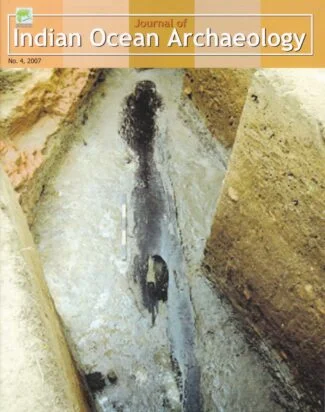
This Journal embodies the results of explorations and excavations conducted by scholars in various countries which witnessed the growth of the personality of the shared culture of the Indian Ocean Rim countries, including the countries of Southwest Asia. It also includes all aspects of cultural, economic and socio-political histories of these countries.
Journal of Indian Ocean Archaeology was launched in 2003 by one of Indias leading academic institutions, the Centre for Research & Training in History, Archaeology and Palaeo-environment, New Delhi. The second issue is in the Press. The Journal is an outcome of the realization on the part of the international community of archaeologists and historians that India has no journal devoted exclusively to the archaeology of the Indian Ocean Rim countries, starting from the Red Sea through the South China Sea, although Indian occupies the central position in this vast area, with three-fourths of its land facing the gulfs and bays of the Indian Ocean. It is common knowledge that Egypt, Ethiopis, Kenya, Arabia, Yemen, Oman, Bahrain and countries bordering the Persian Gulf, including Iraq and Iran, as well as Pakistan, Sri Lanka, Myanmar, Thailand, Cambodia, Indonesia, Malaysia, China, were closely connected with each other through long-distance sea-borne trade-routes for thousands of years. This particular phenomenon had led to the development of what is now generally called Shared Culture with its distinct personality which is Afro-Asian. It is reflected in the material items dug up every year at a number of sites in India and all other countries along the coasts of the Indian Ocean. This journal embodies the results of explorations and excavations conducted by scholars in various countries which witnessed the growth of the personality of the shared culture of the Indian Ocean Rim countries, including the countries of Southwest Asia. It also includes all aspects of cultural, economic and socio-political histories of these countries. The contributors to this journal are from all over the world. It is a MUST for every scholar and layman interested in the history and arachaeology of the coastal countries of the Indian Ocean, from Africa, and West Asia through China.
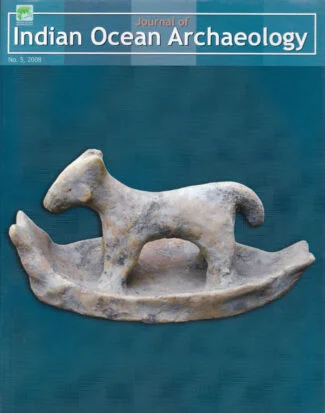
This Journal embodies the results of explorations and excavations conducted by scholars in various countries which witnessed the growth of the personality of the shared culture of the Indian Ocean Rim countries, including the countries of Southwest Asia. It also includes all aspects of cultural, economic and socio-political histories of these countries.
Journal of Indian Ocean Archaeology was launched in 2003 by one of Indias leading academic institutions, the Centre for Research & Training in History, Archaeology and Palaeo-environment, New Delhi. The second issue is in the Press. The Journal is an outcome of the realization on the part of the international community of archaeologists and historians that India has no journal devoted exclusively to the archaeology of the Indian Ocean Rim countries, starting from the Red Sea through the South China Sea, although Indian occupies the central position in this vast area, with three-fourths of its land facing the gulfs and bays of the Indian Ocean. It is common knowledge that Egypt, Ethiopis, Kenya, Arabia, Yemen, Oman, Bahrain and countries bordering the Persian Gulf, including Iraq and Iran, as well as Pakistan, Sri Lanka, Myanmar, Thailand, Cambodia, Indonesia, Malaysia, China, were closely connected with each other through long-distance sea-borne trade-routes for thousands of years. This particular phenomenon had led to the development of what is now generally called Shared Culture with its distinct personality which is Afro-Asian. It is reflected in the material items dug up every year at a number of sites in India and all other countries along the coasts of the Indian Ocean. This journal embodies the results of explorations and excavations conducted by scholars in various countries which witnessed the growth of the personality of the shared culture of the Indian Ocean Rim countries, including the countries of Southwest Asia. It also includes all aspects of cultural, economic and socio-political histories of these countries. The contributors to this journal are from all over the world. It is a MUST for every scholar and layman interested in the history and arachaeology of the coastal countries of the Indian Ocean, from Africa, and West Asia through China.
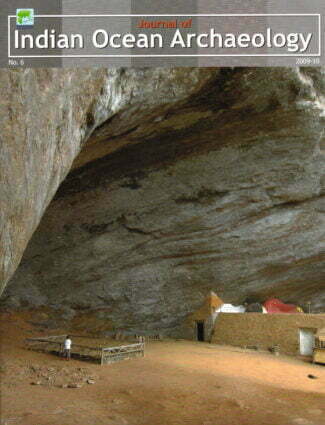
This Journal embodies the results of explorations and excavations conducted by scholars in various countries which witnessed the growth of the personality of the shared culture of the Indian Ocean Rim countries, including the countries of Southwest Asia. It also includes all aspects of cultural, economic and socio-political histories of these countries.
Journal of Indian Ocean Archaeology was launched in 2003 by one of Indias leading academic institutions, the Centre for Research & Training in History, Archaeology and Palaeo-environment, New Delhi. The second issue is in the Press. The Journal is an outcome of the realization on the part of the international community of archaeologists and historians that India has no journal devoted exclusively to the archaeology of the Indian Ocean Rim countries, starting from the Red Sea through the South China Sea, although Indian occupies the central position in this vast area, with three-fourths of its land facing the gulfs and bays of the Indian Ocean. It is common knowledge that Egypt, Ethiopis, Kenya, Arabia, Yemen, Oman, Bahrain and countries bordering the Persian Gulf, including Iraq and Iran, as well as Pakistan, Sri Lanka, Myanmar, Thailand, Cambodia, Indonesia, Malaysia, China, were closely connected with each other through long-distance sea-borne trade-routes for thousands of years. This particular phenomenon had led to the development of what is now generally called Shared Culture with its distinct personality which is Afro-Asian. It is reflected in the material items dug up every year at a number of sites in India and all other countries along the coasts of the Indian Ocean. This journal embodies the results of explorations and excavations conducted by scholars in various countries which witnessed the growth of the personality of the shared culture of the Indian Ocean Rim countries, including the countries of Southwest Asia. It also includes all aspects of cultural, economic and socio-political histories of these countries. The contributors to this journal are from all over the world. It is a MUST for every scholar and layman interested in the history and arachaeology of the coastal countries of the Indian Ocean, from Africa, and West Asia through China.
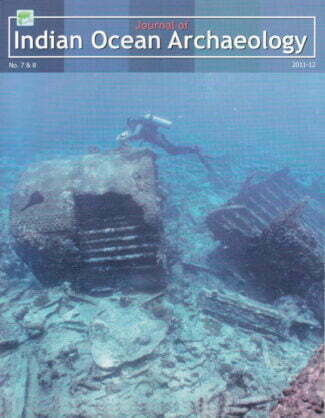
This Journal embodies the results of explorations and excavations conducted by scholars in various countries which witnessed the growth of the personality of the shared culture of the Indian Ocean Rim countries, including the countries of Southwest Asia. It also includes all aspects of cultural, economic and socio-political histories of these countries.
Journal of Indian Ocean Archaeology was launched in 2003 by one of Indias leading academic institutions, the Centre for Research & Training in History, Archaeology and Palaeo-environment, New Delhi. The second issue is in the Press. The Journal is an outcome of the realization on the part of the international community of archaeologists and historians that India has no journal devoted exclusively to the archaeology of the Indian Ocean Rim countries, starting from the Red Sea through the South China Sea, although Indian occupies the central position in this vast area, with three-fourths of its land facing the gulfs and bays of the Indian Ocean. It is common knowledge that Egypt, Ethiopis, Kenya, Arabia, Yemen, Oman, Bahrain and countries bordering the Persian Gulf, including Iraq and Iran, as well as Pakistan, Sri Lanka, Myanmar, Thailand, Cambodia, Indonesia, Malaysia, China, were closely connected with each other through long-distance sea-borne trade-routes for thousands of years. This particular phenomenon had led to the development of what is now generally called Shared Culture with its distinct personality which is Afro-Asian. It is reflected in the material items dug up every year at a number of sites in India and all other countries along the coasts of the Indian Ocean. This journal embodies the results of explorations and excavations conducted by scholars in various countries which witnessed the growth of the personality of the shared culture of the Indian Ocean Rim countries, including the countries of Southwest Asia. It also includes all aspects of cultural, economic and socio-political histories of these countries. The contributors to this journal are from all over the world. It is a MUST for every scholar and layman interested in the history and arachaeology of the coastal countries of the Indian Ocean, from Africa, and West Asia through China.

Journal of Indian Ocean Archaeology was launched in 2003 by one of Indias leading academic institutions, the Centre for Research & Training in History, Archaeology and Palaeo-environment, New Delhi. The second issue is in the Press. The Journal is an outcome of the realization on the part of the international community of archaeologists and historians that India has no journal devoted exclusively to the archaeology of the Indian Ocean Rim countries, starting from the Red Sea through the South China Sea, although Indian occupies the central position in this vast area, with three-fourths of its land facing the gulfs and bays of the Indian Ocean. It is common knowledge that Egypt, Ethiopis, Kenya, Arabia, Yemen, Oman, Bahrain and countries bordering the Persian Gulf, including Iraq and Iran, as well as Pakistan, Sri Lanka, Myanmar, Thailand, Cambodia, Indonesia, Malaysia, China, were closely connected with each other through long-distance sea-borne trade-routes for thousands of years. This particular phenomenon had led to the development of what is now generally called Shared Culture with its distinct personality which is Afro-Asian. It is reflected in the material items dug up every year at a number of sites in India and all other countries along the coasts of the Indian Ocean. This journal embodies the results of explorations and excavations conducted by scholars in various countries which witnessed the growth of the personality of the shared culture of the Indian Ocean Rim countries, including the countries of Southwest Asia. It also includes all aspects of cultural, economic and socio-political histories of these countries. The contributors to this journal are from all over the world. It is a MUST for every scholar and layman interested in the history and arachaeology of the coastal countries of the Indian Ocean, from Africa, and West Asia through China.
Journal of Indian Ocean Archaeology was launched in 2003 by one of Indias leading academic institutions, the Centre for Research & Training in History, Archaeology and Palaeo-environment, New Delhi. The second issue is in the Press. The Journal is an outcome of the realization on the part of the international community of archaeologists and historians that India has no journal devoted exclusively to the archaeology of the Indian Ocean Rim countries, starting from the Red Sea through the South China Sea, although Indian occupies the central position in this vast area, with three-fourths of its land facing the gulfs and bays of the Indian Ocean. It is common knowledge that Egypt, Ethiopis, Kenya, Arabia, Yemen, Oman, Bahrain and countries bordering the Persian Gulf, including Iraq and Iran, as well as Pakistan, Sri Lanka, Myanmar, Thailand, Cambodia, Indonesia, Malaysia, China, were closely connected with each other through long-distance sea-borne trade-routes for thousands of years. This particular phenomenon had led to the development of what is now generally called Shared Culture with its distinct personality which is Afro-Asian. It is reflected in the material items dug up every year at a number of sites in India and all other countries along the coasts of the Indian Ocean. This journal embodies the results of explorations and excavations conducted by scholars in various countries which witnessed the growth of the personality of the shared culture of the Indian Ocean Rim countries, including the countries of Southwest Asia. It also includes all aspects of cultural, economic and socio-political histories of these countries. The contributors to this journal are from all over the world. It is a MUST for every scholar and layman interested in the history and arachaeology of the coastal countries of the Indian Ocean, from Africa, and West Asia through China.

This Journal embodies the results of explorations and excavations conducted by scholars in various countries which witnessed the growth of the personality of the shared culture of the Indian Ocean Rim countries, including the countries of Southwest Asia. It also includes all aspects of cultural, economic and socio-political histories of these countries.
Journal of Indian Ocean Archaeology was launched in 2003 by one of Indias leading academic institutions, the Centre for Research & Training in History, Archaeology and Palaeo-environment, New Delhi. The second issue is in the Press. The Journal is an outcome of the realization on the part of the international community of archaeologists and historians that India has no journal devoted exclusively to the archaeology of the Indian Ocean Rim countries, starting from the Red Sea through the South China Sea, although Indian occupies the central position in this vast area, with three-fourths of its land facing the gulfs and bays of the Indian Ocean. It is common knowledge that Egypt, Ethiopis, Kenya, Arabia, Yemen, Oman, Bahrain and countries bordering the Persian Gulf, including Iraq and Iran, as well as Pakistan, Sri Lanka, Myanmar, Thailand, Cambodia, Indonesia, Malaysia, China, were closely connected with each other through long-distance sea-borne trade-routes for thousands of years. This particular phenomenon had led to the development of what is now generally called Shared Culture with its distinct personality which is Afro-Asian. It is reflected in the material items dug up every year at a number of sites in India and all other countries along the coasts of the Indian Ocean. This journal embodies the results of explorations and excavations conducted by scholars in various countries which witnessed the growth of the personality of the shared culture of the Indian Ocean Rim countries, including the countries of Southwest Asia. It also includes all aspects of cultural, economic and socio-political histories of these countries. The contributors to this journal are from all over the world. It is a MUST for every scholar and layman interested in the history and arachaeology of the coastal countries of the Indian Ocean, from Africa, and West Asia through China.

This book traces the development of F. Scott Fitzgerald and his characters from dreams to maturity. It shows how he utilised his own experience to represent the national and the human experience in his novels.
The novels of F. Scot Fitzgerald reflect the life he lived. They can, in fact, be seen as the records of a pilgrim in his progress from innocence to experience. Almost as a rule all the heroes in Fitzgeralds novels mature as they encounter the real world. All his major works illustrate an agonized search for the true inner self, a quest for individuality. This book traces the development of Fitzgerald and his characters from dreams to maturity. It shows how all the heroes in Fitzgeralds novels from Amory Blaine in This Side of Paradise to Monroe Stahr in The Last Tycoon, in their search for different ideals, represent mans quenchless desire to affirm the perennial moral values of life. In recording the journey of all his dreamers from Amory Blaine to Monroe Stahr, he depicted a longing for a unified selfhood that enjoys a universal appeal in the context of the contemporary realities of life. The book shows how Fitzgerald utilized his own experience a tragic experience on the whole to represent the national experience and ultimately the human experience. Almost as a rule, all of them start their journey as innocents with an explicit faith in life and the pre-conceived notions about the goodness of man. Experience comes to them through their confrontation with reality both social and moral which do not conform to their idealistic faith. Since they are powerless to change the reality they live in, they brood, they suffer. The overwhelming impression is of disillusionment and suffering. But Fitzgerald bestows a positive value on suffering. His wise and tragic sense of life imparts an enduring quality to his works. The book justifies how Fitzgeralds works finally transcend the time he lived in and establish him as a major American writer.
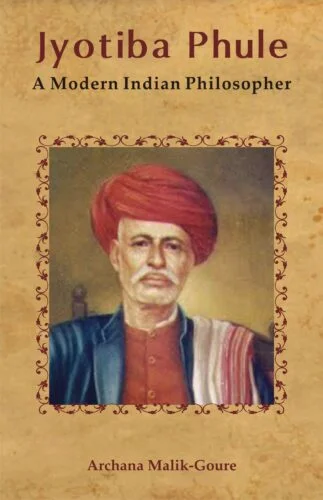
Jyotiba Phule, a multi-faceted social reformer of the nineteenth century, relentlessly worked for the uplift of the oppressed classes, having started schools for girls and children of the lower castes and farmers, widow homes and orphanages. His philosophy of universal religion strengthened him to fight against child marriage, sati and casteism, and for the remarriage of Brahmin widows.
Caste conflicts ruled the roost in the nineteenth-century India. It housed many social evils like untouchability, discrimination against women and the underprivileged, and sati. Education was the prerogative of the mighty Brahmins and the upper-class society, resulting in the perennial exploitation of the backward classes, women, farmers and widows.
Jyotiba Phule (182790) dawned as the saviour of the weaker sections. Defying diktats and intimidations, he got himself and his wife educated. This paved the way for the Phule couples to start and successfully run few schools for the children of the downtrodden and girls. He opened his well for the untouchables’ use. Through tireless efforts and continued writings, he fought against the social injustices, nail and tooth. His writings were a new philosophy in the making a philosophy of universal religion. He believed in God, but refused to believe the Vedas, saying them as the handworks of Brahmins.
Man was his religion and his emancipation was his drive. He founded Widow Homes and orphanages. For him education was the key for liberation from all social evils. He fought with the English regime to have the children of farmers and the downtrodden equal rights to education. He was eventually accredited with the title ßMahatmaû.
This book is sure to generate keen interest among social workers, modern historians, researchers on social reforms and reformers, and students of sociology and political science.
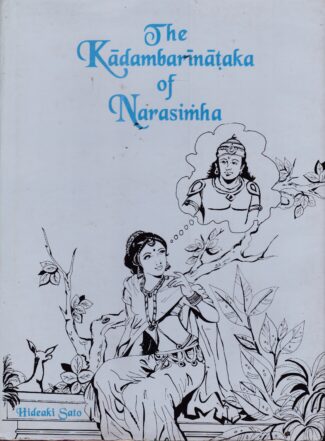
This is the first-ever English translation of Narasimhas Kadambarinataka and its critical evaluation. It highlights the plays importance in Sanskrit-Prakrt literature of medieval India and compares it with the kavyas of classicists like Sudraka.
It is the first ever English translation of Narasimhas Kadambarinataka. And also its first critical evaluation, highlighting not only its high importance in Sanskrit-Prakrit literature of medieval India, but also how this fourteenth-century play compares favourably with the masterly kavyas of the classicists like Sudraka, Kalidasa, Bhavabhuti and Rajashekhara.
Kadambarinataka is essentially a dramatic version of Kadambari : an internationally celebrated novel/romance of the seventh century, authored by the legendary Bana and his son. For over six centuries, it has remained unacknow-ledged and unnoticed owing to the prevailing prejudice against the whole range of Sanskrit-Prakrit literature that came to be written after the 10th century or so. Though the play saw its only printed edition in 1936, it was not studied in perspective nor has it so far been translated into any language. Dr. Hideaki Sato retrieves Kadambarinataka from the centuries of oblivion, offering this literary masterpiece, in two parts, to English-knowing audiences the world over. Part One, in the nature of a critical introduction, focusses on Narasimha: the author, his times and his writings; together with insightful analyses of his natakas sources, plot structure, language, style, innovative elements, and how far it has deviated from Banas Kadambari. Part Two comprises the English rendering of Kadambarinataka which, based directly on its two manuscripts available today, also carries extensive textual notes.

The Book mainly deals with the historical importance of the Kalamukha movement in Karnataka and the existence of an exceptional school of arts which flourished under Kalamukha patronage, describing Somanatha temple at Haralahalli and the Kadambeshvara temple at Rattihalli with their architecture, iconography, epigraphy and religious and cultural background.
The Kalamukha temples in Karnataka are associated with the Lakulashaiva movement especially the beliefs and practices of the Kalamukha Shaivites and the jakkanacari style of temples in Karnataka. This volume is a study of two of the best examples of Kalamukha shrines in the region. It focuses on the Somanatheshvara temple at Haralahalli and Kadambeshvara temple at Rattihalli, splendid examples of conversion of single-cell shrines into triple sancta. With numrous illustrations of the temples including their plans and sculptures and referring to and quoting from the Agamas, the Puranas and other ancient works, it studies the architecture of the temples along with their history, the general plans of the temples, their interior including pillars, lintel and entrances, their external structure, and their iconography, particularly the main deities in the temples. It makes a unique effort to study the inscriptions associated with the temples which are in Kannada interlaced with Sanskrit verses and containing Sanskrit words, presenting their Roman transliteration and translation into English. The inscriptions include one on renovation of Someshvara temple by King Joma (ce 1181), one on the foundation of a temple of Daseshvara laid by Dasiraja (ce 1188) and one that eulogises the Kadambas and minister Soma (ce 1144).
The volume, with extensive notes that explain terms in a simple manner, will prove invaluable to scholars and students of Indology, especially those interested in early medieval religion, culture and architecture in South India.
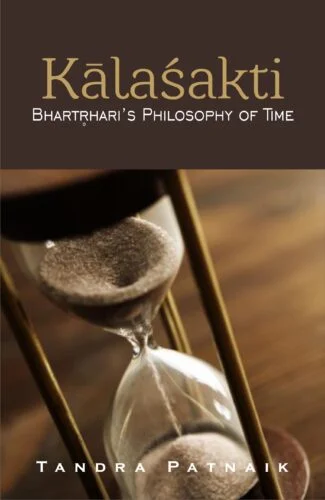
The volume delves into Bhartriharis conception of Time as power (Kalashakti). Time as the power (Kalashakti) serves as an important conceptual tool to maintain Bhartriharis non-dualistic position, both in the level of ontology as well as semantics. Kala serves as an important conceptual link between unity and diversity; unchanged and the changing.
The volume delves into Bhartriharis conception of Time as power (Kalashakti) as enunciated in the ninth section of the third Canto of his Vakyapadiya, entitled Kala Samuddesha. Prof. Patnaik tries to argue that Time as the power (Kalashakti) serves as an important conceptual tool for Bhartrihari to maintain his non-dualistic position, both in the level of ontology as well as semantics.
The book examines the Bhartriharian model of Kala as shakti in the backdrop of two other models available in the Indian philosophical tradition Time as substance (Vaisheshika and Nyaya Darshana), on the one hand, and Time as atom (kshana/svalakshanas) of the Yoga and Sautrantika Buddhism. Whether Kala is admitted as an abstract and trans-empirical principle (Kala) or just as a measurable unit of events, no philosophical tradition has been able to discard its semantic role. This is evident from our usage of tense-words. But this double-valued nature of time as a metaphysical principle and as a semantic apparatus comes out most explicitly in Bhartriharis analysis of time as a power. In his unflinching non-dualistic (advaitin) stand both in the level of metaphysics as well as semantics Kala serves as an important conceptual link between unity and diversity; unchanged and the changing. Kala also has the point of convergence between the two streams of philosophy metaphysics and semantics.
The book is rare in nature, both in content and accessability, as there is very little literature available on the topics discussed in the book. The paucity of materials in the area of thought makes it a scholars collection.
| × |
|
Ancient Movements of Indo-Aryans and Indo-Aranians 1 x ₹585.00 |
| × |
|
Sleeping to Dream and Dreaming to Wake Up 1 x ₹1,440.00 |
| × |
|
Abhinavaguptas Hermeneutics of the Absolute 1 x ₹1,620.00 |